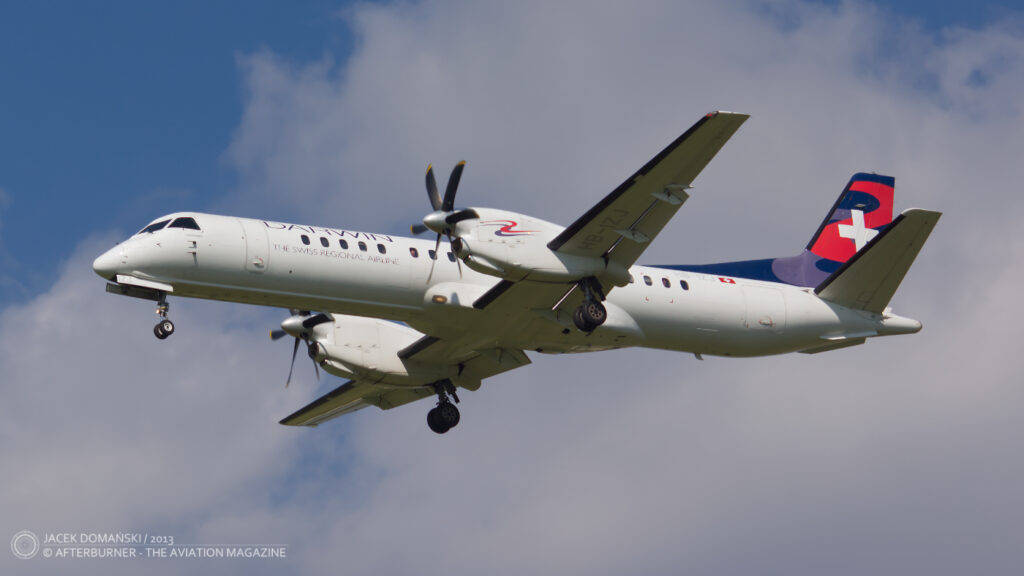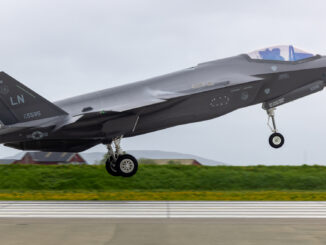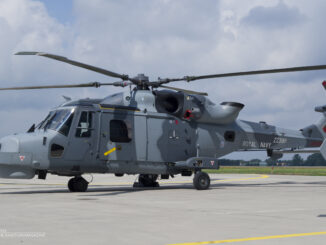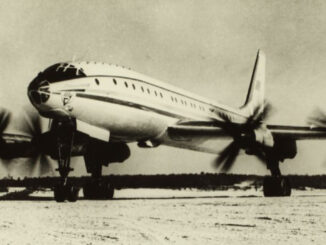 Saab 2000 (c/n 015, HB-IZJ of the Darwin Airline), approaching the runway of Praha-Ruzyně airport, Prague, July 2013.
Saab 2000 (c/n 015, HB-IZJ of the Darwin Airline), approaching the runway of Praha-Ruzyně airport, Prague, July 2013.
In the mid-1980s, the Swedish aircraft manufacturer Saab AB entered the civil aviation market with a short-haul turboprop passenger aeroplane, Saab 340. It was the first significant non-military development of the company that, until that time, was mainly focused on combat aircraft.
Approximately a decade earlier, the Saab management board, following some industry research decided to begin works on the company’s first major civilian project. It was the regional passenger aeroplane able to carry about thirty passengers. In 1980, the Swedish company established a joint venture with Fairchild Aircraft to work together on that project, and the future airliner was designated SF340.
On 25th January 1983, the SF340 performed its maiden flight. In June of next year, the new Saab/Fairchild passenger aircraft began its operational service with Crossair, a Swiss-based regional airline.
The aeroplane was positively received by the market and shortly after became one of the top-selling short-haul turboprop airliners in the world. However, in 1985 the Fairchild company announced its soon withdrawal from the joint project that had to be executed after completion of the forty first aircraft. Therefore, in 1987, Saab became the sole manufacturer of the new turboprop airliner that was also redesignated as Saab 340.
In 1988, the Swedish company launched development of an extended variant of its successful airliner. The new aeroplane had to carry approximately fifty passengers and to offer an interesting, cost-fuel effective, alternative to jet aircraft on short- and medium-range routes.
The Saab 2000, as the new variant of the aircraft was designated, performed its maiden flight on 26th March 1992. It was powered by two Allison GMA 2100 turboprop engines (currently known as Rolls-Royce AE 2100), was approximately 7,5 metres longer than its predecessor and could carry 50 to 58 passengers, depending on seat configuration.
Similarly to the Saab 340, the Crossair company became the initial operator for the Saab 2000. The first example of the aircraft was delivered on 30th August 1994 and finally the Swiss operator acquired a total number of thirty-four Saab 2000 airliners.
Regrettably to the Saab company, the new aircraft did not repeat the market success of the Saab 340. Worldwide demand for such medium-haul turboprop aeroplane was very low, mainly due to greater passenger comfort combined with better profitability offered by small passenger jets, such as Embraer ERJ 145 and Bombardier CRJ. Merely, the passengers – and consequently the route operators – preferred to fly with the jet aircraft that were quieter and lacked the vibrations, characteristic for the turboprop engines.
Therefore, the Swedish company ceased production of the Saab 2000 in 1999, after manufacturing about sixty examples of the aircraft (comparing to 460 examples of the Saab 340 built until that time). Soon, the Saab 2000 airliners were also systematically vanishing from the major airlines and their subsidiaries, such as Air France, SAS and TAP Portugal. Corssair, who owned more than 50% of the total production of that aircraft, retired its last Saab 2000 by 2005.
Interesting is that Saab, to increase cost-effectiveness of the project, also offered the extended airliner for military customers. List of its version included Airborne Early Warning and Control (AEW&C) aircraft, SIGINT aeroplane and Maritime Patrol Aircraft. Two AEW&C aircraft were acquired by the Royal Saudi Air Force and four by the Pakistan Air Force. In 2020, the Saab company announced it signed a contract for another batch of Saab 2000 AEW&C aeroplanes, with deliveries scheduled to end of 2023. The customer was not disclosed but it is believed it was Pakistan, thus the country´s fleet of such aircraft increased to nine examples.
The Saab 2000 ´015´ featured in our Photo of the Week series, was manufactured in 1995. The aeroplane was acquired by Crossair and registered HB-IZJ. After its retirement from service with that Swiss company, the aircraft changed its owner several times and the list includes Swiss European Air Lines, Darwin Airline, Etihad Regional and Adria Airways. In 2020, the ´015´ was acquired by Täby Air Maintenance AB, the Swedish aviation company specialized in overhaul and conversion of regional airliners, such as both aforementioned Saab aircraft and ATR 72. Since then, the ´015´ is stored at Örebro airfield, together with a few more Saab 2000 aeroplanes.
Darwin Airline was established in 2003, in Switzerland. The company operated a few domestic and European regular routes, also flying under Adria Airways and Etihad brands. In 2017, the company ceased its activity, due to financial issues and was declared bankrupt in December of that year.



